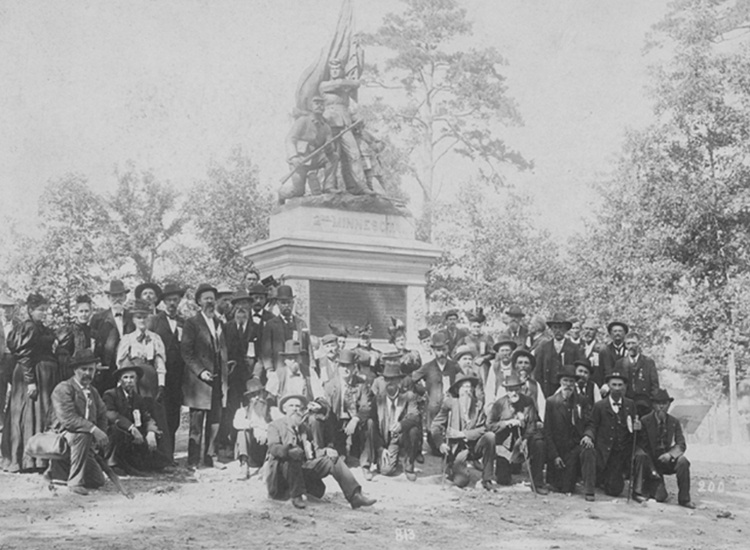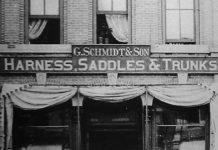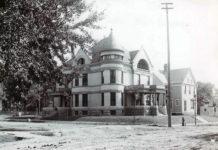The Medal of Honor is the highest award for valor in action against an enemy force that can be bestowed upon an individual serving in the United States military. The deed performed must have been one of personal bravery or self-sacrifice so conspicuous as to clearly distinguish the individual above his comrades and must have involved risk of life.
The honor was established by a joint resolution of Congress during the Civil War in July 1862 and signed into law by President Lincoln. The first Medal of Honor was awarded to Pvt. Jacob Parrot, and five others, on March 25, 1863, for their actions in the Great Locomotive Chase in April 1862. Since this time, fifty-six Medals of Honor are accredited to Minnesota soldiers.
Fifty-six Medals of Honor are accredited to Minnesota soldiers
National Medal of Honor Day is observed every year on March 25th, the date the first medal was awarded. On this day to remember the sacrifices of men and women in uniform who have earned this highest of military honors, we remember the brave men from the Corn Crib Party. (see The Corn Crib Party, MankatoLife.com, March 5, 2020)
Due to government oversight, it wasn’t until September 11, 1897 that eight men from the Corn Crib Party were each given a Congressional Medal of Honor. What became of these men after the war ended?
Joseph Burger
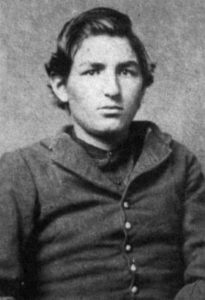
Joseph Burger (1848–1921) was born in the mountains of Austria. His immigrant parents died of cholera in Chicago leaving him an orphan at the age of six. He was sent aboard an orphan train to a foster home in New Ulm, Minnesota. When he was nine, he was working as a farm hand on a farm near New Ulm.
When Fort Sumter was fired upon on April 12, 1861, Joseph was anxious to become a soldier. He wrote in his diary that he thought he could join “maybe as a drummer” even though he was only 13 years old. He ran away from home to join the army and because he was tall for his age, he convinced the recruiter that he was eighteen. Joseph became a drummer in the Minnesota Second Regiment in July 1861. In a diary entry he wrote that he received “drumsticks, a new uniform, boots, et al.”
Until the Second Minnesota left the state in October that year, Joseph worked on his drums and marching, as well as other tasks such as carrying water, road building, trench digging, wood gathering, and tending horses. He also learned that the drummers were special targets for the enemy – “we were vital to the signaling of troop movements.”
“I’m just a boy—13 years old, and what I’ve done!” – Joseph Burger Diary entry January 19, 1862
Burger was one of 14 others from Co. H assigned to go to the front to seek forage for mules on February 15, 1863 near Nolinsville, Tennessee. Little did this small 10-team wagon train know what they would encounter ahead. The lesser-known battle of the Corn Crib Fight and the brave and defiant action by this party of men earned them all the Medal of Honor. Joseph was then just 14 years old.
The Second Minnesota went on to fight at Chickamauga, Missionary Ridge, and Kennesaw Mountain and Burger reenlisted in 1863. Burger was guarding Confederate prisoners being moved by train to Chattanooga, Tennessee in July 1864. Somewhere near Dalton, Georgia, the train jerked forward, causing the guards and prisoners to be jostled about. Joseph lost his balance, he fell out of the boxcar door and his rifle discharged—a Minie ball went through his right hand, through the left forearm, before striking his right leg above the kneecap. The ball passed down the leg breaking the fibula and lodged in the calf. In his diary he wrote, “I fear for my very life for I am nearly destroyed.” Burger’s left arm was amputated and when strong enough he was sent to a hospital in Chicago.
In December of 1864, Burger was commissioned a captain at age 16, becoming one of the youngest men in the Union Army to attain that rank during the Civil War. He was assigned to Hancock’s Invalid Reserve Corps at Fort Douglas Camp in Illinois.
Despite his disabilities, which were nearly total as he needed help dressing, washing, and assistance for most things, Burger did not give up. He carried the bullet in his right leg throughout his life.
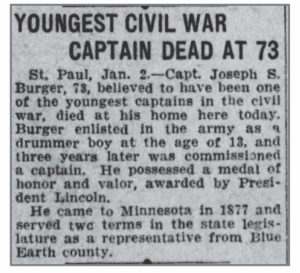
After his discharge in 1865, Burger, now 17 years old, went to Missouri and studied law. He married Caroline Nolton in 1869, practiced law in Missouri for a time and served in the state legislature in 1872. In 1877, he and Caroline moved back to Mankato, Minnesota and he served in the Minnesota House of Representatives in 1881 through 1882. He later moved to St. Paul and served as a military storekeeper on Governor Hubbard’s staff.
Joseph and Caroline Burger raised seven children together—two sons and five daughters. His grandson Warren Burger (son of Charles) became a U.S. Supreme Court Chief Justice.
Joseph died a few months after his wife on January 3, 1921 at the age of 72. They are buried in Oakland Cemetery in St. Paul, Minnesota.
William Andrews Clark
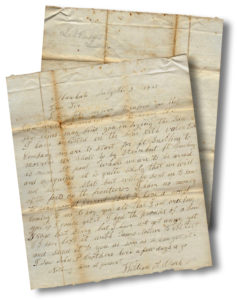
William Andrews Clark (1828-1916) was born in Pennsylvania. By the time the Civil War began, he had taken up a claim in Shelbyville in Blue Earth County, MN, where he was recruited at the age of 33.
From his letter July 3, 1861 in Mankato, Minn. Addressed to L.W. Perkins, Lesener, Minn.
“I have enlisted in the Blue Earth Volunteers Company. We are to start for Ft. Snelling tomorrow. We shall go by steamboat. Ft. Snelling is near St. Paul where we are to be armed and equipped. It is quite likely we will not leave the state but will be sent up to some of the forts on the frontiers.”
Clark reenlisted in 1863 and was discharged as Sergeant in July 1865. After the war he returned to Minnesota and married Lorana Keene in 1866. They had two children and lived in Nicollet Co., area near Kerns. Clark died Jan. 9, 1916 Nicollet Co., MN at the age of 87 and is buried in Hebron Cemetery in Nicollet Co.
James Flannigan/Flanagan
James Flannigan/Flanagan (1833-1905) was born in Ireland, immigrated with his family to Montreal, Canada and later to a farm near Louisville in St. Lawrence County, New York.
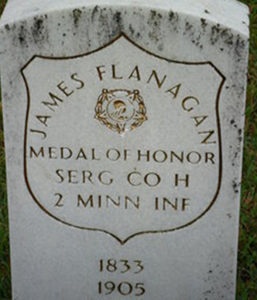
At age 28, Flannigan enlisted as a Canadian soldier in Company H, 2nd Minnesota Volunteer Infantry regiment at Fort Snelling in 1861. He was one of about 1,176 Canadians fighting with Minnesota units during the war. He served as private for three years in the Civil War with the Minnesota regiment. During his service, he was promoted to corporal and later to sergeant. Flannigan continued to serve with his unit at major battles: Missionary Ridge, Chickamauga, Chattanooga and with Gen. George Sherman’s March to the Sea”.
When the war ended in 1865, James returned to his family’s 80-acre dairy farm in Louisville, New York. He married Kate Mallen in 1868 and they raised four children.
James Flanagan died October 4, 1905 at the age of 72, and is buried at Saint Lawrence Cemetery, Louisville, New York, just southwest of his Canadian home of Montreal.
Milton Hanna
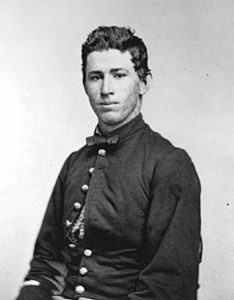 Milton Hanna (1842-1913) was born in Ohio, the ninth of 13 children. The Hanna family came to Mankato in April 1853, five years before statehood was granted to Minnesota. After his father died when he was thirteen, Milton’s education came to an end as it was necessary for him to help earn a living on the farm for the family.
Milton Hanna (1842-1913) was born in Ohio, the ninth of 13 children. The Hanna family came to Mankato in April 1853, five years before statehood was granted to Minnesota. After his father died when he was thirteen, Milton’s education came to an end as it was necessary for him to help earn a living on the farm for the family.
When the Civil War began, Milton (age 19) was one of the first men from Blue Earth County to enlist in 1861. He was mustered in as a private in Co. H, 2nd Minnesota Infantry Regiment. Hanna was one of 14 others that became known as the Corn Crib Party.
Hanna fought at Shelbyville and Chickamauga where he was severely wounded in the leg. Despite his injury, he reenlisted in 1863 and participated in the 100 days fighting during the Atlanta campaign, accompanying Sherman on his March to the Sea. He had earned the rank of Sergeant when he was mustered out on July 11, 1865 at Louisville, Kentucky having served throughout the entire war.
After the war, Hanna returned to Mankato and resumed civilian life. He married Louise Purrier in 1869 and they had two children. He ran a grocery store on South Front Street that was described as a “mecca for chess and checker players.” He became the driving force in building the Mankato Fire Department into a professional organization and was an active member of the G.A.R. Wilkin Post #19.
The Mankato Review reported that Milton Hanna and others were to receive the Medal of Honor in 1897 and printed the letter Hanna received:
WAR DEPARTMENT.
Washington D.C., July 30, 1897
Milton Hanna, Esq., Mankato, Blue Earth Co., Minn.
SIR: You are hereby notified that by direction of the president and under the provisions of the act of congress approved March 3, 1863, providing for the presentation of Medals of Honor to such officers, non-commissioned officers and privates as have most distinguished themselves in action, a Congressional Medal of Honor has this day been presented to you for most distinguished gallantry in action, the following being a statement of the particular service, viz:
“At Nolinsville, Tenn., February 15, 1863, this soldier, then corporal, Co. H., Second Minnesota, was one of a detachment of sixteen men escorting a wagon train that was attacked by one hundred and twenty-five cavalry. A most heroic defense the attack was repulsed and the train saved.”
The medal will be forwarded to you by registered mail, as soon as it shall have been engraved.
Respectfully,
P.A. Alger
Secretary of War.
On September 16, 1897 the Mankato Review reported: “Messrs. Milton Hanna, L.N. Holmes and W.A. Clark received by registered mail, today noon, their medals of honor sent them from the war department at Washington D.C. They were made and engraved by Tiffany & Co., New York. They are made of bronze and the shape and style is very similar to the regular G.A.R. badge, but is somewhat heavier. On the back of the star is engraved the following:”
THE CONGRESS.
SERGT. MILTON HANNA,
CO., H, 2d MINN. INF.
FOR
GALLENTRY AT NOLINSVILLE, TENN.
FEBY. 15TH, 1863
“The engraving is the same on all of the medals as above, excepting a change of the name. They are encased in a neat plush case. Accompanying the medal is also a little ribbon bow to be worn on the lapel of the coat by those belonging to the Medal of Honor Legion.”
Milton Hanna died Jan. 21, 1913 of a heart ailment at the Soldiers Home near Minnehaha Falls in Minneapolis and is buried in Glenwood Cemetery in Mankato, MN.
Lovilo Holmes
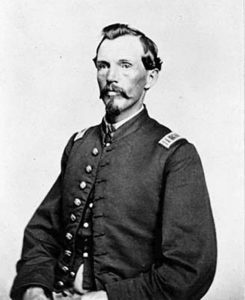
Lovilo Holmes (1830-1914) was born in New York where he learned the sawyer’s trade before he came to Mankato, MN in 1858. Here he was employed as head sawyer in a grist and sawmill.
In 1861, Holmes (age 31) enlisted in Company H, 2nd Minnesota Volunteers as a first duty sergeant under Captain Dixson and later Captain John Beatty.
Following the corn crib fight near Nolinsville, the war department promoted Holmes to the rank of first lieutenant for his leadership and astute action. Members of his company presented him with an inscribed sword and officer’s sash. From this time on he was in direct command of Co. H while Captain Beatty was on staff duty. When Captain Beatty resigned his position, Holmes was promoted to the rank of Captain.
After the war Holmes returned to Mankato and worked with Captain Clark Keysor (another Civil War veteran) in the contracting business. He was married to Amanda Gail and they had two daughters. He was an active member of the Grand Army of the Republic, Wilkins Post #19.
“I was given too much credit, for it was the boys that won the scrap” Lovilo Holmes
When a Mankato newspaper reporter asked him about the Medal of Honor, Holmes replied, “I was given too much credit, for it was the boys that won the scrap.”
Captain Lovilo Holmes died at age 83 on May 7, 1914 in Mankato and is buried in Glenwood Cemetery.
Byron Pay
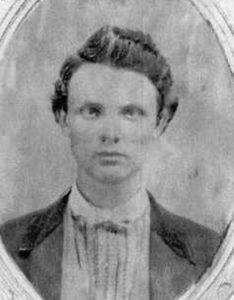
Byron Pay (1844-1906) was born in New York. He came to Blue Earth County, MN when he was thirteen years old and worked on his brother Benjamin’s farm in Ceresco Township.
At the age of sixteen, Pay enlisted in 1861 and served with Co. H, Second Minnesota Volunteer Infantry. Three of his brothers served in the Civil War with Illinois regiments: Robert, Warren and Asher.
Just months after the Corn Crib Fight, Co. H fought in the Battle of Chickamauga on September 20, 1863. This was a battle the Union lost. Byron was seriously wounded from a gunshot to the left shoulder and was discharged with a disability in 1864.
Pay returned to Mankato after his discharge and was hired by the Northwestern Fur Company. He was assigned to load 86 wagons with flour at Mankato and deliver them across western Minnesota and eastern Dakota Territory to what became Fort Thompson in September. He left Mankato on the 1st of July, arriving with his wagon train at the fort during the month of August. He remained in the employ of the fur company until 1871.
Byron Pay married Hattie Youngman. In 1872 they located a preemption claim in the Dakota Territory, where they built a sod house on the Big Sioux River. A year later, they moved into Brookings County and made the first homestead filing in the township. Their home became the post office and he the postmaster at Oakwood. Pay built and ran a hotel, and also acted as a locating agent in the early days locating homesteads for early settlers. At age 30, he became a U.S. Marshal serving from 1874-1885. He also served five years as a Brookings County Commissioner.
By 1883, the town of Oakwood was a casualty of the railroad when it extended a branch bypassing the town. The Pay family moved to Volga, SD, when Byron was still in his early 40’s and he worked for the Bank of Volga. He was also a Vice-President of an Old Settlers’ Association, was active in the GAR and was the commander of the Brookings GAR post in 1891 and 1892.
Pay was 53 years old when he was awarded the Medal of Honor by President William McKinley on Sept. 11, 1897—34 years after the Civil War battle near Nolensville, Tennessee. He died suddenly at his home in Volga, SD on Monday, February 19, 1906 and is buried in Arlington Cemetery, Arlington, SD.
John Vale
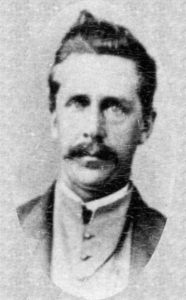
John Vale (1835-1909) was born in London, England and when he was sixteen, he set off alone aboard the steamer Lenobia to make a life in America.
When the Civil War began, he was farming near Mapleton, Minnesota. He enlisted in 1861 and although he was not quite six feet tall, the 25 year-old private was one of the tallest men in Co. H.
According to Vale’s account of the Corn Crib fight, Sgt. Holmes saw the Confederates were coming to them first, ordered them to take cover in the barn and corn crib and hold fire until he shot first.
“With these orders we took refuge in the buildings. I took shelter in the lower part of the barn. Holmes with two men in the hay mow, the others in cribs, hog pens, and other put-buildings between the house and barn.
“The advance was less than two rods from us, when three shots from the hay mow took down the leading horse, which fell on the rider and held him down during the fight, after which he was taken prisoner. Other shots quickly followed, killing eight horses and wounding several men. The others quickly dismounted and, running back, took shelter behind the fences. During their confusion, we had time to reload our guns, and as some loaded quicker than others, we kept up a continuous fire until the enemy was driven away.”
Vale served four years, earned the rank of Sergeant and was discharged July 11, 1865 in Louisville, KY with the rest of the company.
After the war, John returned to Minnesota, but didn’t stay long. By 1870 he had moved to Davenport, Iowa where he became a chief clerk for the United States Postal Service until his retirement. He married Maggie Peters and they had two children. He spent the last nine years of his life as a shut-in due to rheumatism and paralysis. He died February 4, 1909 and is buried in Oakdale Cemetery in Davenport, IA.
On September 19, 1897 the Quad City Times reported “John Vale is one of the most modest men in Davenport. He attends to his own business every day in the year and never meddles with the affairs of others. He is quiet, courteous…and yet John Vale has just been honored by the people of the United States through a high military officer. Money could not buy such a letter as this.
“Mr. Vale’s army record is one that does him great honor…During all this time he was never scratched by a bullet; never passed a day in the hospital; or in the guard house. He saw hard fighting in many battles, among them the siege of Corinth, the battles of Chickamauga, Chattanooga and Missionary Ridge…”
“The medal was received by Mr. Vale a day or two ago. It was enclosed in a red-leather, silk lined box. From the bar holding the pin depends an eagle with wings spread, and below this some crossed cannon and balls. The main part of the medal is a five-pointed star. On the back is an appropriate inscription. The pin and the star are attached by red, white, and blue ribbon. The medal is of bronze, beautiful as well as substantial.”
Samuel Wright
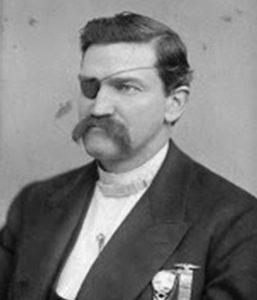
Samuel Wright (1828-1918) born in Indiana and came to Blue Earth Co., MN after his first wife Susan died in 1857. He worked as a carpenter. At the age of 33, he enlisted in Blue Earth County in 1861 and was promoted to Corporal in 1862.
On March 14, 1863, Samuel Wright was detailed for extra duty under Lt. Col. Bishop. He was a wheelwright and was detached from Company H to serve as the Brigade wagon maker until he was mustered out of the service when his three years enlistment was over in 1864. He returned to his birthplace of Harrison Co., Indiana, married Permelia McRae and raised four children. The Wright family moved to a farm in Kansas in the mid-1880s.
Samuel Wright died July 9, 1918 at the home of his son, Charles in Tribune, KS and is buried in the Maple Grove Cemetery in Wichita, KA.
Samuel Leslie Jr.
Samuel Leslie Jr. (1842-1896) was born in Vermont. At the age of 19, he enlisted at Blue Earth, Faribault Co., MN. He reenlisted in 1863, was promoted to Full Corporal and mustered out July 11, 1865 at Louisville, KY with the rest of Co. H. After the war he went to Ouray, Colorado, married Martha Butterfield and raised four children. Samuel worked as a contractor at the Robinson uranium mine. On February 9, 1896, he slipped from a levee and fell 700 feet while working alone. His body lay in a pool of 50 feet of water at the bottom of the shaft. He is buried in Fairmount Cemetery in Denver, Colorado.
Louis Londrosh
Louis Londrosh (1839-1880) was born in Wisconsin. He enlisted at the Winnebago Agency (now St. Clair) in Blue Earth County in July 1861. Londrosh reenlisted in 1863 at Chattanooga. Records show he was a prisoner of war from August 27, 1864 through the end of the war. After the war he returned to Minnesota, married and raised a family on a farm in Martin County. He died July 28, 1880 of tuberculosis and is buried in Lone Cedar Cemetery near Sherburn, MN.
Photo Courtesy Minnesota Historical Society – The Second Minnesota Volunteer Infantry at the monument to the Second Minnesota at Snodgrass Ridge, Chickamauga, Georgia, on the occasion of the park dedication, September 18, 1895
Not all the men involved in the Corn Crib Party survived the war.
Charles Krause
Charles Krause (1834-1863) was born in Pennsylvania. He enlisted in 1861 at the age of 29 at St. Paul, Minnesota with Company G, 2nd Minnesota. He was transferred to Co. H by special order in August. Krause was mortally wounded at the Battle of Chickamauga on October 6, 1863.
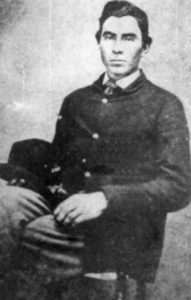
Charles Liscom
Charles Liscom (1836-1865) born in New York. He was 25 years old when he enlisted at Belmont, Jackson Co., MN. He reenlisted in 1863 and was discharged December 22, 1864 due to disability. Liscom died a few days later on December 24, 1865 and is buried in Oakland Cemetery, Keokuk, Iowa.
Samuel Louden
Samuel Louden (1840-1863) born in New York. He was 21 years old when he enlisted from Sterling Township in Blue Earth County in 1861. Louden was killed in action at the Battle of Missionary Ridge in Chattanooga on November 15, 1863 and is buried in the Chattanooga National Cemetery in Tennessee. The Mapleton G.A.R. post was named after Samuel Louden—Sam Louden Post 74.
Nelson Crandall
Nelson Crandall (1838-1864) born in Ohio, he was one of eight sons, seven of whom served their country as Union soldiers in the Civil war. At the age of 22, he enlisted from Shelbyville in 1861. He reenlisted in 1863, was killed during the Battle of Chickamauga on January 15, 1864, and buried in the Chattanooga National Cemetery, Chattanooga, Tennessee.
Homer Barnard
Homer Barnard (1845-1864) born in Massachusetts. He was 19 years old when he enlisted from Shelbyville in Blue Earth County, MN in 1861. He reenlisted in 1863, died on February 26, 1864 at Rockford, Illinois and is buried in Laona Cemetery at Durand, Illinois.


